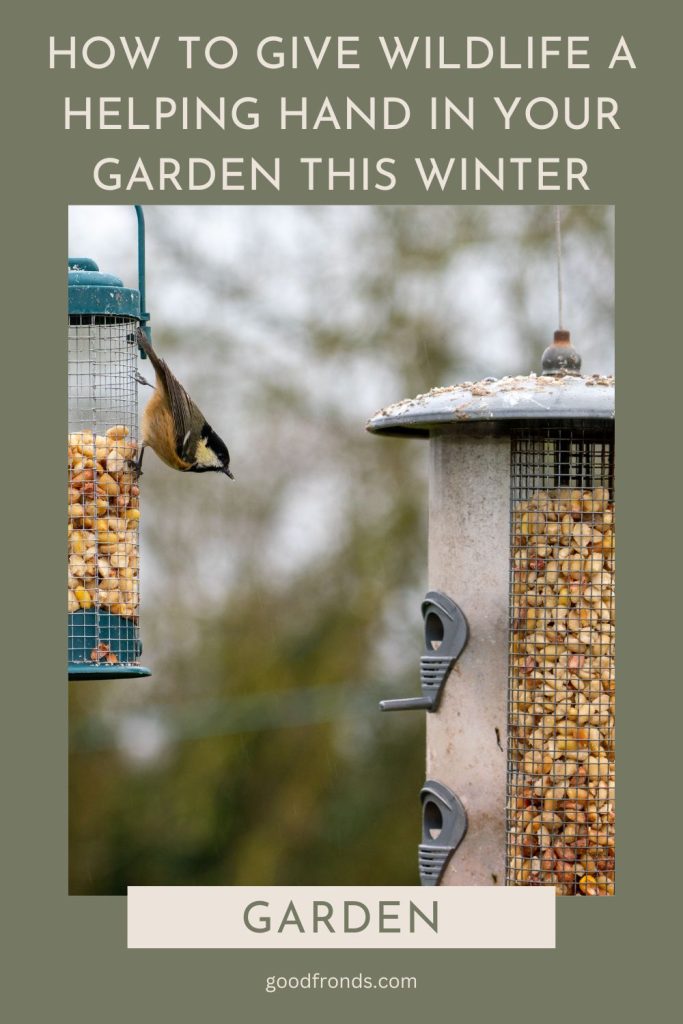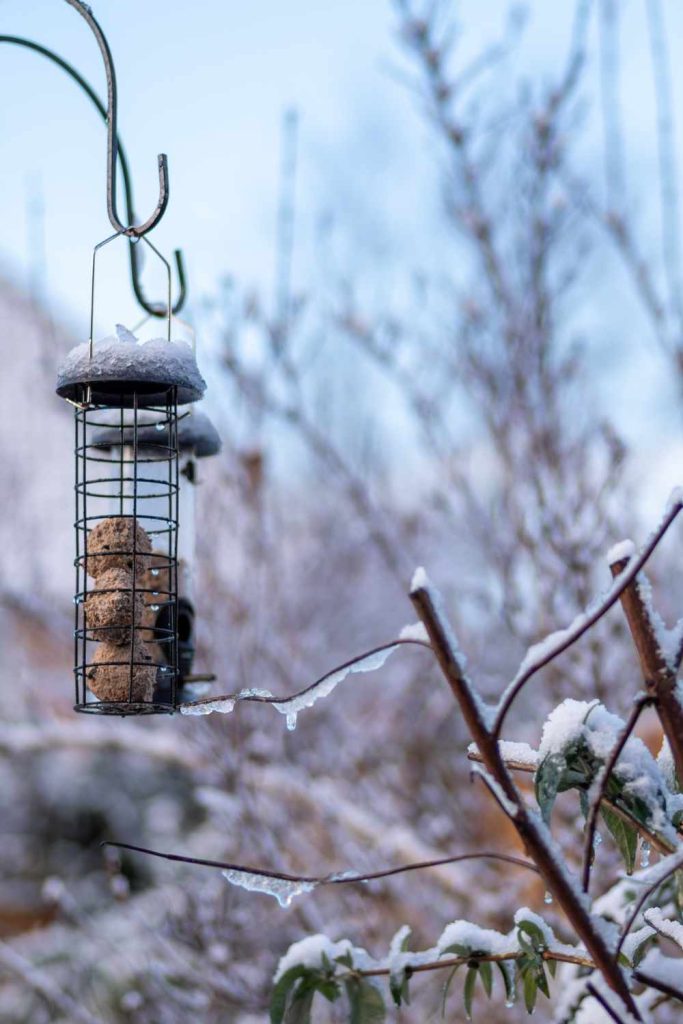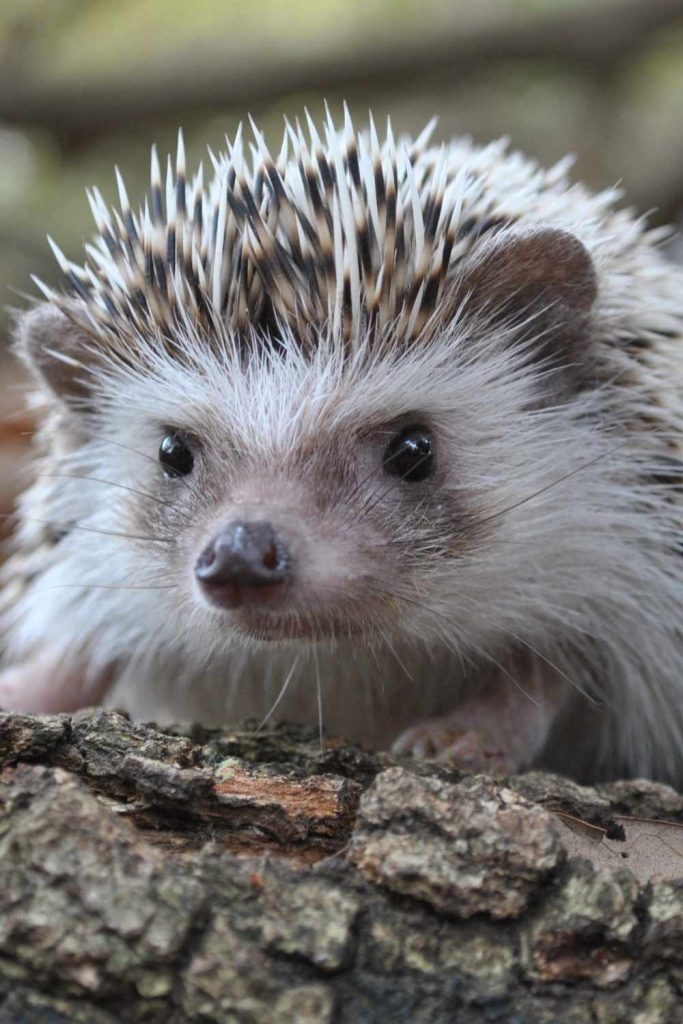The UK’s gardens provide a crucial refuge for wildlife and never more so than in winter when food sources are scarce and temperatures low. During the coldest and leanest months of the year gardeners can significantly impact the survival of various species by offering food, water, and shelter.

Giving a helping hand to wildlife can boost biodiversity and foster a thriving ecosystem in your garden.
There’s lots you can do tho give nature a helping hand in the cold winter months. Small actions taken by many can have a big impact and support UK wildlife in a time when food supplies are low and the temperature is ever changing.
Resources like seed heads and berrying shrubs or trees sustain many species, contributing to a healthier, balanced environment, while thoughtful planting schemes will ensure that pollinators active on sunny winter days can still find nectar and pollen.
A few evergreens will also provide shelter for a range of invertebrate and vertebrate life. Leaf piles and overwintering stems left uncut means our gardens protect creatures large and small from the cold. Additional feeding for garden birds and supplying ice-free water for wildlife can be a life-saver when temperatures plummet.
“Winter can be a tough time for many species, meaning they need all the extra support they can get in our gardens.”
– Helen Bostock, RHS Senior Wildlife Specialist
The rewards of giving back to nature in this way are numerous and one of the key benefits is the chance to watch wildlife even in the smallest of gardens or balconies, often at very close quarters. With a few simple tasks you can turn your space into a haven for wildlife, brightening up the darkest of winter days.
How To Help Garden Birds In Winter
- Help birds in winter by putting out high calorie food such as fat balls, suet blocks or even grated cheese and bacon rinds. Beware balls in plastic nets as birds including woodpeckers can get their tongues caught.
- Create your own fat blocks by melting suet into moulds such as coconut shells or logs with holes drilled in. Try different recipes to entice a range of birds; peanut cakes for starlings, insect cakes for tits and berry cakes for finches. While fat is important, do also provide a grain mix or nuts to maintain a balanced diet.
- Sparrows, finches and nuthatches will enjoy prising the seeds out of sunflower heads.
- Use wire mesh feeders for peanuts and seed feeders for other seed. Specially designed feeders are needed for the tiny niger seed, loved by goldfinches.

- Feed placed on a wire mesh held just off the ground will entice ground-feeding birds such as robins and dunnocks. Thrushes and blackbirds favour fruit so scatter over-ripe apples, raisins and song-bird mixes on the ground for them.
- Consider planting berrying and fruiting trees and shrubs such as apple trees, hawthorn, holly, Cotoneaster and Pyracantha. Such plants draw winter migrants such as redwings and, if you’re very fortunate, waxwings from the countryside into gardens.
- Put food out regularly, rather than sporadically, as otherwise birds will waste vital energy visiting your garden for little reward.
- In late winter, clean out bird boxes so they are ready for new nests in spring
“Providing food and a safe haven when resources are otherwise scarce is a vital lifeline, and we can all do our bit to help. By following a few simple and inexpensive steps gardeners can contribute to a thriving ecosystem and enjoy a sense of connection to nature, even at this quiet time of year.”
– Helen Bostock, RHS Senior Wildlife Specialist
How to help other wildlife in your garden…
- Incorporate winter-flowering species into your planting scheme, to attract pollinators such as bumblebees. Snowdrops, aconites, mahonias, crocuses, and hellebores are all popular, but be sure to select single flower varieties, rather than double, so that the nectar and pollen is more readily available.
- Melt a hole in the ice on ponds to allow the wildlife to drink, as well as enter and exit the water. Place a sauce pan of hot water on the ice until a hole has been melted. Do not hit or crack ice as this can send shockwaves through the water that harms wildlife.
- Provide a shallow dish or container of water at ground level. This will benefit other garden wildlife that needs to drink, as well as birds. Check it daily especially in icy conditions to ensure a supply of clean, unfrozen water is always available.
- Be careful when you empty out compost heaps. As these are often warm, they can be the winter resort of frogs, toads and other animals.

- Woody prunings and dead wood service wildlife best if stacked up in a pile. The same goes for autumn leaves. If a bonfire is essential – such as for burning diseased material –check it before lighting for sheltering and hibernating animals, such as hedgehogs, toads and frogs.
- If you have a new garden with few mature plants and hiding places for insects, make a bug hotel and put up in a sheltered position. Overwintering ladybirds and lacewings will find this useful.
- Leave healthy herbaceous and hollow-stemmed plants unpruned until early spring. These can provide homes for overwintering insects.
What do you do to help wildlife in your garden in winter?




